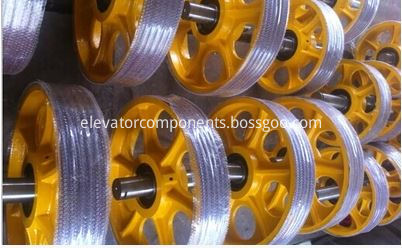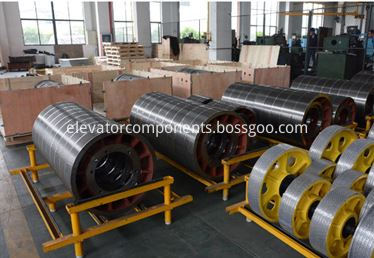After the fruit trees are deciduous, the orchard should be cleaned up in time. The leaves, fallen fruits, residual branches, and insects are buried in time or taken out of the garden and burned. Combined with pruning, the insects, branches, worms, diseased branches, and diseased fruits are removed and buried or burned in time, and the old skin and dry skin are carefully scraped. Old dry skin is often the wintering nest of pests such as red spiders, and its roots can greatly reduce its base. If rot disease is found, it should be cured as soon as possible, and applied with 40 times solution of arsenic arsenic or with mud. The smear method saves the economy and saves time, and rarely re-transmits after the cure. It is one of the methods for popularization and promotion.
The specific method is: when the disease is found, it is not necessary to scrape, use the soil of the orchard (where the soil can be) and the mud (to the extent of the kneading), and the thickness of the disease is 3 to 5 cm. The circumference is 5-6 cm wider than the disease. When smearing, the mud on the sickness must be pressed several times to make the mud and the sickness tightly combined, and then wrapped with a plastic film bag (used in the field). Then use the rope to wrap it around in a circle, so that the mud and the disease are close together, so that the water does not evaporate. One year later, the cover was removed, and the dried sputum formed by the affected part was peeled off together with the soil to expose the callus. After the soil of the diseased part fell off, the diseased callus expanded rapidly and healed quickly.
The trunk is painted white to prevent freezing damage. After the main branch of the trunk is scraped, it should be painted white at the base in time to prevent the main stem and the big branch from causing laceration due to temperature difference. The whitening agent formula is: 7.5 kg of lime and 1 kg of salt, and 1 kg of stone sulphur mixture is added to the water and stirred for 18 kg.
The key to high yield in the coming year is to use the closed door fertilizer. After picking the fruit, spray the foliar fertilizer, dryland dragon or amino acid, rare earth, etc. in time to prevent freezing and drought, increase nutrition, prevent pumping, and promote full flower buds and robust trees.
For tree species that have been leafless and can not be foliar sprayed, 802-amino acid plus gum can be applied to the trunk. The method is: dilute the amino acid by 3-5 times to coat the trunk 30-40 cm, and then apply it again with the Baoshu collagen solution after 10 minutes to prevent the liquid fertilizer from evaporating.
Under the canopy, the winter base fertilizer should be based on high-quality decomposed chicken, pig manure and other organic fertilizers, supplemented by chemical fertilizers, with micro-fertilizer. Strive to provide 1.5 kg of high-quality organic fertilizer per kilogram of fruit to ensure at least 1 kg of fruit and 1 kg of fertilizer. Add 1 kg of superphosphate per 50 kg of organic fertilizer. In the northern fruit area, there are often trace element deficiency such as iron deficiency and zinc deficiency. For example, iron deficiency can be mixed with ferrous sulfate and organic fertilizer in a ratio of 1:5. Note that it is not advisable to apply phosphate fertilizer when applying the fertilizer, because phosphorus and iron have antagonistic effects. For example, zinc deficiency can be combined with zinc sulphate in the early autumn application. The saplings are 100-150 g per plant, and the result is 200-800 g per plant. In winter, the base fertilizer should be applied in a circular ditch or a radial strip, and the fertilization site should be rotated year by year. (
We carry high quality Elevator Cast Iron Pulley as below
Elevator Guiding Pulley
Elevator Diverting Pulley
Elevator Deflecting Sheave
Elevator Deflector Sheave
Elevator Suspension Sheave
Elevator Suspension Pulley
Elevator Diversion Sheave
Elevator Crosshead Sheave
Elevator Car Top Pulley
Elevator Car Bottom Pulley
Elevator Cast Iron Pulley
Elevator Casting Pulley
Elevator Counterweight Sheave
Elevator Counterweight Pulley
High Speed Elevator Double Wrap Pulley
for all major elevator and escalator brands as below
OTIS Elevators, ThyssenKrupp Elevators, Schindler Elevators, KONE Elevators, Mitsubishi Elevators, Fujitec Elevators, Hitachi Elevators, Toshiba Elevators, Fuji Elevators, Express Elevators, Sigma Elevators, LG Elevators, Hyundai Elevators, BLT Elevators, CANNY Elevators, SJEC Elevators, KOYO Elevators, IFE Elevators, Thyssen Elevators, GiantKONE Elevators, XJ Schindler Elevators, Xizi OTIS Elevators, Shanghai Mitsubishi Elevators, GUANGRI Elevators


Elevator Suspension Pulley, Elevator Diverting Pulley, Elevator Deflecting Sheave, Elevator Deflector Sheave, Elevator Guiding Pulley, Elevator Car Top Pulley
CEP Elevator Products ( China ) Co., Ltd. , https://www.zjsmartcommercialescalators.com